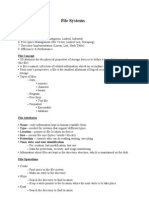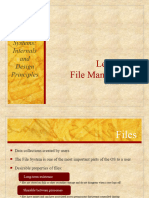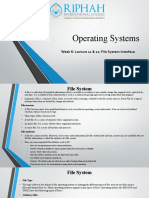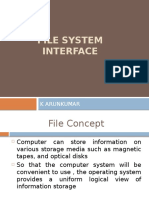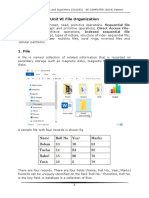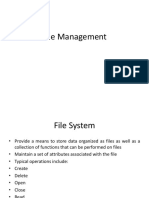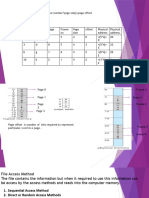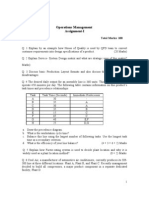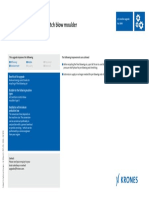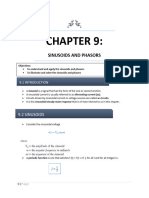0% found this document useful (0 votes)
31 views5 pagesOS
The document discusses various file management systems and access methods, highlighting OS/2's HPFS and its improvements over FAT, including support for longer filenames and reduced fragmentation. It also evaluates the conflicting approaches to deleted file handling in Windows, emphasizing the need for further research. Additionally, it covers the applications of sequential, direct, and indexed access methods in different systems, including Git and DBMS, showcasing their importance for efficient data management.
Uploaded by
trysample07Copyright
© © All Rights Reserved
We take content rights seriously. If you suspect this is your content, claim it here.
Available Formats
Download as PDF, TXT or read online on Scribd
0% found this document useful (0 votes)
31 views5 pagesOS
The document discusses various file management systems and access methods, highlighting OS/2's HPFS and its improvements over FAT, including support for longer filenames and reduced fragmentation. It also evaluates the conflicting approaches to deleted file handling in Windows, emphasizing the need for further research. Additionally, it covers the applications of sequential, direct, and indexed access methods in different systems, including Git and DBMS, showcasing their importance for efficient data management.
Uploaded by
trysample07Copyright
© © All Rights Reserved
We take content rights seriously. If you suspect this is your content, claim it here.
Available Formats
Download as PDF, TXT or read online on Scribd
/ 5







